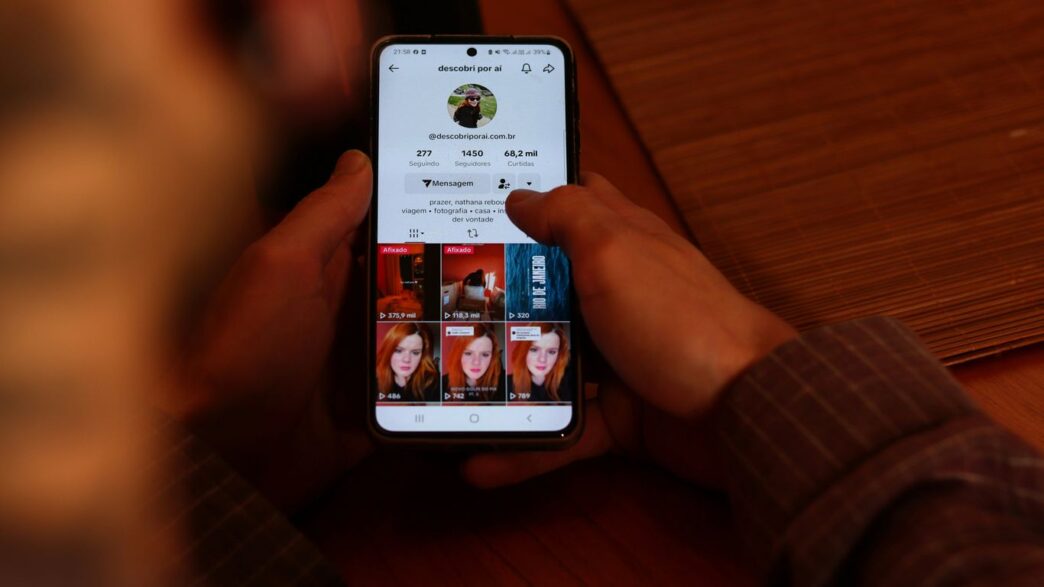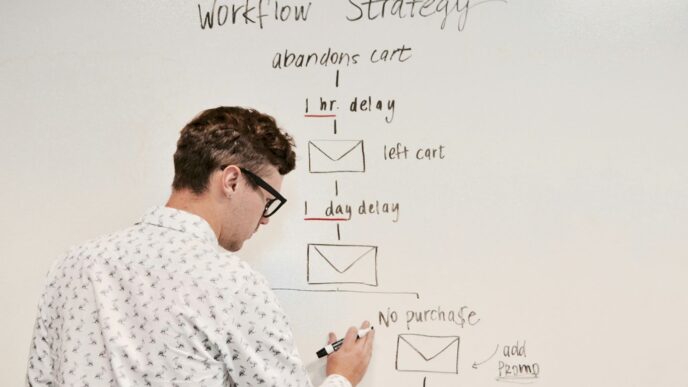Trying to make your social media work better? It can feel like a lot, right? You want to post regularly, but what do you even say? This guide is here to help you figure out a good plan for content daily. We’ll break down how to make content that people actually want to see, how to get it in front of them, and how to keep it going without burning out. Let’s get your social media on track.
Key Takeaways
- Figure out what you want to achieve with social media before you start posting. Knowing your goals helps guide all your content decisions.
- Understand who you’re talking to. Knowing your audience means you can make content they’ll actually care about and engage with.
- Plan your posts. A content calendar helps you stay organized and ensures you’re posting consistently, which is important for content daily success.
- Engage with people. Respond to comments and messages to build a connection. It’s not just about broadcasting; it’s about talking with your audience.
- Check what’s working. Look at your social media numbers to see which posts do well and use that info to make your future content even better.
Mastering Your Content Daily Strategy

Before you even think about posting, you need a solid plan. It sounds obvious, but so many people just jump in without one. This is where we lay the groundwork for everything that comes after. Without a clear strategy, your daily content efforts will likely feel scattered and won’t get you where you want to go.
Define Your Social Media Goals
What are you actually trying to achieve with your social media presence? Are you looking to sell more products, get more people to visit your website, or maybe just build a community around your brand? Your goals will shape everything else you do. Think about them clearly. Are they specific, measurable, achievable, relevant, and time-bound (SMART)?
Here are some common goals:
- Increase brand awareness
- Drive website traffic
- Generate leads or sales
- Improve customer service
- Build a loyal community
Understand Your Target Audience
Who are you talking to? You can’t create content that connects if you don’t know who’s on the other side of the screen. What are their interests? What problems do they have that you can help solve? What kind of content do they like to consume? The more you know about them, the better you can tailor your message.
Consider these points:
- Demographics: Age, location, gender, income, education level.
- Psychographics: Interests, hobbies, values, lifestyle, pain points.
- Online Behavior: Which platforms do they use most? When are they online? What kind of content do they engage with?
Develop a Comprehensive Content Strategy
This is where it all comes together. Based on your goals and audience, you’ll figure out what kind of content to create, on which platforms, and how often. A content calendar is your best friend here. It’s basically a schedule that maps out your posts in advance. This helps you stay organized and consistent, which is super important for social media success. It also means you can plan for holidays, special events, or product launches.
Your content strategy should include:
- Content Pillars: The main themes or topics you’ll cover.
- Content Formats: What types of content will you use (images, videos, text, stories, etc.)?
- Platform Focus: Which social media channels will you prioritize?
- Posting Schedule: How often will you post on each platform?
- Brand Voice: The personality and tone of your communication.
Crafting Compelling Content Daily
Okay, so you’ve got your strategy down, you know who you’re talking to, and you’ve got some ideas. Now comes the fun part: actually making the stuff people want to see. It’s not just about posting; it’s about making posts that make people stop scrolling. Think about it, your feed is probably packed with stuff, right? You need your content to stand out. The goal is to create posts that people not only see but actually connect with.
Master the Art of Storytelling
People love stories. It’s how we’ve shared information forever. Facts are fine, but a good story sticks with you. It makes your brand feel more real, more human. You can share how your business got started, maybe a funny challenge you overcame. Or, even better, tell a story about how someone used your product or service and it made their life easier. That kind of stuff really connects.
Here’s a quick breakdown of how to think about your stories:
- The Beginning: What’s the situation? Who are the main characters (could be you, your team, a customer)? What’s the problem or challenge?
- The Middle: What happens next? What are the steps taken to solve the problem? What obstacles pop up?
- The End: How is the problem solved? What’s the outcome? What’s the lesson learned or the feeling left with the audience?
Don’t forget to think about who you’re telling the story to. What do they care about? What are their problems? Tailor your stories so they feel relevant to them.
Leverage Video Content Effectively
Video is huge right now, and honestly, it’s not going anywhere. It’s a great way to show personality and get people’s attention. Think short, punchy videos. Maybe a quick demo of a product, a behind-the-scenes look at your workspace, or even just you talking directly to the camera answering a common question.
Here are some video ideas to get you started:
- How-To Guides: Show people how to do something related to your niche. Keep it simple and clear.
- Q&A Sessions: Answer questions your audience has been asking. This shows you’re listening.
- Day-in-the-Life: Give people a peek into your world. It builds trust and makes you relatable.
- Product Spotlights: Briefly show off a product or service, focusing on one key benefit.
Remember, you don’t need fancy equipment. Your phone is probably good enough to start. Just focus on good lighting and clear audio. People will forgive a little imperfection if the content is good.
Curate Engaging Content from Other Sources
Creating everything from scratch can be a lot. That’s where curating comes in. It means finding great stuff from other people and sharing it with your audience. This can position you as someone who knows what’s going on in your industry. When you share something, don’t just hit retweet or share. Add your own thoughts. Why do you think this is important? What’s your take on it? This adds your unique voice and shows your audience you’re not just a content aggregator, but a source of thoughtful information.
Optimizing Your Content Daily for Reach
Getting your content seen by the right people is half the battle, right? It’s not enough to just post; you need to be smart about how you do it. Think of it like shouting into a crowded room – you need to make sure your voice is heard above the noise. That means using the right tools and techniques to get your message out there.
Implement Effective Hashtag Strategies
Hashtags are like little signposts for your content. They help people who aren’t already following you find what you’re interested in. Using them correctly can really boost how many people see your posts. Don’t just slap on any hashtag you can think of, though. You need to be strategic.
- Research relevant hashtags: Look at what popular accounts in your niche are using. See what hashtags your target audience is following or using themselves.
- Mix it up: Use a combination of broad, popular hashtags and more specific, niche ones. A broad hashtag might get you seen by more people, but a niche one can attract a more interested audience.
- Don’t overdo it: Most platforms have a limit, and stuffing your post with too many hashtags can look spammy. Find a good balance that works for each platform.
Optimize Content for Each Platform
What works on Instagram might fall flat on LinkedIn, and vice versa. Each social media site has its own vibe and its own rules, so you need to tweak your content to fit.
- Image and Video Sizes: Make sure your visuals are the right dimensions. A square photo looks great on Instagram but might get cut off on Twitter.
- Caption Length: Some platforms prefer short, punchy text, while others are fine with longer, more detailed descriptions. Know your audience for each platform.
- Platform Features: Use the tools each platform gives you. Instagram Stories, Twitter polls, LinkedIn articles – they’re there to help you connect.
Create Your Own Brand Hashtag
Having your own hashtag is like giving your brand a unique identifier. It makes it easy for people to find all your content in one place, and it encourages others to use it too.
- Keep it simple and memorable: Something easy to spell and remember is best.
- Make it unique: Check if it’s already being used by someone else.
- Promote it everywhere: Put it on your profile, in your posts, and even on your website. This is how you build a consistent presence and encourage community around your brand.
Building Community Through Content Daily
Making friends online isn’t just about posting pretty pictures or clever captions. It’s about making people feel like they’re part of something. When you focus on building a community, your social media goes from just being a broadcast channel to a real gathering place. This is where your content really starts to work for you.
Foster Genuine Engagement
This means actually talking with people, not just at them. Think about it: when someone leaves a comment, do you just hit ‘like’ and move on? Or do you take a moment to reply, maybe ask a follow-up question? That little bit of effort makes a huge difference. It shows you’re paying attention and that you care about what your followers have to say. It’s like having a conversation at a party instead of just standing in a corner.
Here are a few ways to get people talking:
- Ask questions: Don’t just share information. Ask your audience for their opinions, experiences, or what they’d like to see next. Simple questions like "What’s your biggest challenge with X?" or "What are you looking forward to this weekend?" can get the ball rolling.
- Run polls and quizzes: These are easy ways for people to participate without writing a novel. They’re fun and give you quick insights into what your audience likes.
- Go live: Live video sessions are fantastic for real-time interaction. You can answer questions as they come in, share behind-the-scenes looks, or just chat. It feels very immediate and personal.
Encourage User-Generated Content
This is gold. When your followers create content about you or your brand, it’s like having a whole team of enthusiastic fans spreading the word. It’s authentic and often more trusted than anything you could say yourself. Plus, it gives you great material to share!
How do you get people to create content? Make it easy and rewarding:
- Run contests or challenges: Ask people to share photos or videos using your product, or participating in a themed activity. Offer a prize for the best submissions.
- Create a branded hashtag: This gives people a specific place to share their content related to you. It also makes it easy for you to find and reshare their posts.
- Feature your followers: Regularly share posts from your audience on your own feed or in your Stories. Tag them and give them a shout-out. People love being recognized!
Respond Promptly to Audience Interactions
Speed matters when it comes to building relationships online. If someone takes the time to comment on your post or send you a message, try to get back to them fairly quickly. Waiting days to respond can make people feel ignored, and they might not bother interacting again.
Think about the timing:
- Within 24 hours: This is a good general rule for most comments and messages. For urgent inquiries, aim for even faster.
- Acknowledge quickly: Even if you can’t give a full answer right away, a quick "Thanks for your message, we’ll get back to you soon!" can go a long way.
- Be consistent: Try to set aside time each day to check and respond to interactions. This keeps your community feeling active and cared for.
Analyzing and Iterating for Content Daily Success
So, you’ve been putting out content daily, which is awesome. But how do you know if it’s actually working? That’s where looking at the numbers comes in. It’s not just about posting; it’s about posting smart. You need to see what’s hitting the mark and what’s falling flat.
Utilize Social Media Analytics
Every platform, from Instagram to TikTok, has its own built-in tools to show you how your posts are doing. These are your first stop. They tell you things like how many people saw your post (impressions) and how many unique people actually saw it (reach). You can also see how many people liked, commented, or shared your stuff. It’s like getting a report card for your content. Don’t forget to check out third-party tools too, they can give you a bigger picture across all your accounts.
Understand Key Performance Metrics
What numbers should you even care about? Here are a few big ones:
- Engagement Rate: This is a big one. It’s basically how much people are interacting with your content (likes, comments, shares, saves) compared to how many people saw it. High engagement means your content is connecting.
- Reach vs. Impressions: Reach is the number of unique people who saw your content. Impressions are the total number of times your content was displayed. Knowing the difference helps you understand how widely your message is spreading.
- Follower Growth: Are you gaining followers? Losing them? Sudden spikes or drops can tell you a lot about what kind of content your audience wants more (or less) of.
- Click-Through Rate (CTR): If your goal is to get people to visit your website or a specific link, CTR is what you need to watch. It shows how many people clicked on your link out of everyone who saw the post.
Here’s a quick look at what some common metrics mean:
| Metric | What it Tells You |
|---|---|
| Likes | Basic approval or acknowledgment |
| Comments | Deeper engagement, conversation starter |
| Shares | Content is good enough to pass on to others |
| Saves | Content is useful or interesting enough to revisit |
Refine Your Strategy Based on Data
Okay, so you’ve got the data. Now what? This is where the real magic happens. Look for patterns. Did a certain type of video get way more shares? Did posts with questions get more comments? Maybe posts at a specific time of day perform better. Use this information to tweak your content calendar. If carousel posts are doing great, make more of them. If a certain topic falls flat, maybe dial it back. It’s all about making adjustments based on what your audience is actually responding to. Don’t be afraid to try new things, but always keep an eye on the results. This constant cycle of posting, analyzing, and adjusting is how you get better over time.
Staying Ahead with Content Daily Trends
Social media moves fast, right? It feels like every other week there’s a new feature or a different type of video everyone’s watching. To keep your content from feeling stale and to actually connect with people, you’ve got to pay attention to what’s happening. It’s not about chasing every single fad, but understanding the bigger shifts and how they might fit your brand.
Monitor Social Media Platforms
This is pretty straightforward. The platforms themselves are usually the first to tell you what’s new. Think about it: Instagram, TikTok, X (formerly Twitter) – they all have blogs or announcement sections. Make it a habit to check these out regularly. When they roll out something new, like a different editing tool or a new way to interact, try it out early. Sometimes, using a new feature right away can give your post a little extra visibility.
Engage with Industry Leaders and Influencers
People who are really dialed into social media, whether they’re big creators or just smart folks in your industry, often give you a heads-up on what’s coming. Follow them. See what they’re talking about, what new formats they’re experimenting with. It’s like getting a sneak peek. Attending online talks or industry events can also be super helpful for spotting these shifts before they become mainstream.
Utilize Social Media Listening Tools
These tools are basically your ears on the internet. Things like BuzzSumo or even just setting up Google Alerts for certain keywords can show you what people are talking about. You can track mentions of your brand, your competitors, or topics related to your business. This helps you see what’s trending in real-time and what questions your audience might have. It’s a good way to find content ideas too.
Here’s a quick look at what you might track:
| Metric | What it Tells You |
|---|---|
| Keyword Mentions | How often your brand or topics are being discussed |
| Trending Hashtags | What conversations are gaining traction |
| Competitor Activity | What your rivals are posting and how it performs |
| Audience Questions | Common queries that can inspire content |
Keep Going and Growing
So, we’ve gone over a bunch of ways to get better at social media. It might seem like a lot at first, but remember, it’s all about taking it one step at a time. Start with a plan, know who you’re talking to, and don’t be afraid to try new things, like videos or telling stories. The most important part is to just keep showing up and talking with people. Social media changes fast, so keep an eye on what’s new and don’t be afraid to adjust your approach. You’ve got this!
Frequently Asked Questions
What’s the main point of having a daily social media plan?
Having a daily plan helps you share cool stuff regularly that your followers will like. It’s like having a map to guide you, making sure you don’t miss chances to connect with people and reach your goals online. It makes creating posts easier and helps you stay on top of what’s popular.
Why is it important to know who my audience is?
Knowing your audience is super important because it helps you create posts they’ll actually care about. When you understand what they like, what problems they have, and where they hang out online, you can talk directly to them and build a real connection. It’s like knowing what snacks your friend likes before you buy them a treat.
How can video content help my social media?
Videos are a really exciting way to share your message and connect with people. When you make videos that your audience enjoys and that show what your brand is all about, you can get more people interested, have more fun interactions, and grow your online presence a lot.
What does ‘user-generated content’ mean?
User-generated content means sharing posts that your own followers create. For example, if someone posts a picture using your product and tags you, that’s user-generated content! It’s a great way to show that real people love what you do and it helps build trust.
How do I know if my social media posts are working?
You can check your social media analytics, which are like reports that show you how many people saw your posts, if they liked them, and if they did what you wanted them to do. By looking at these numbers, you can figure out what’s working well and what you could do better.
What are hashtags and how should I use them?
Hashtags are those little words or phrases with a ‘#’ sign in front, like #SocialMediaTips. They help people find your posts when they search for certain topics. Using the right mix of popular and specific hashtags can help more people see your content and connect with you.














